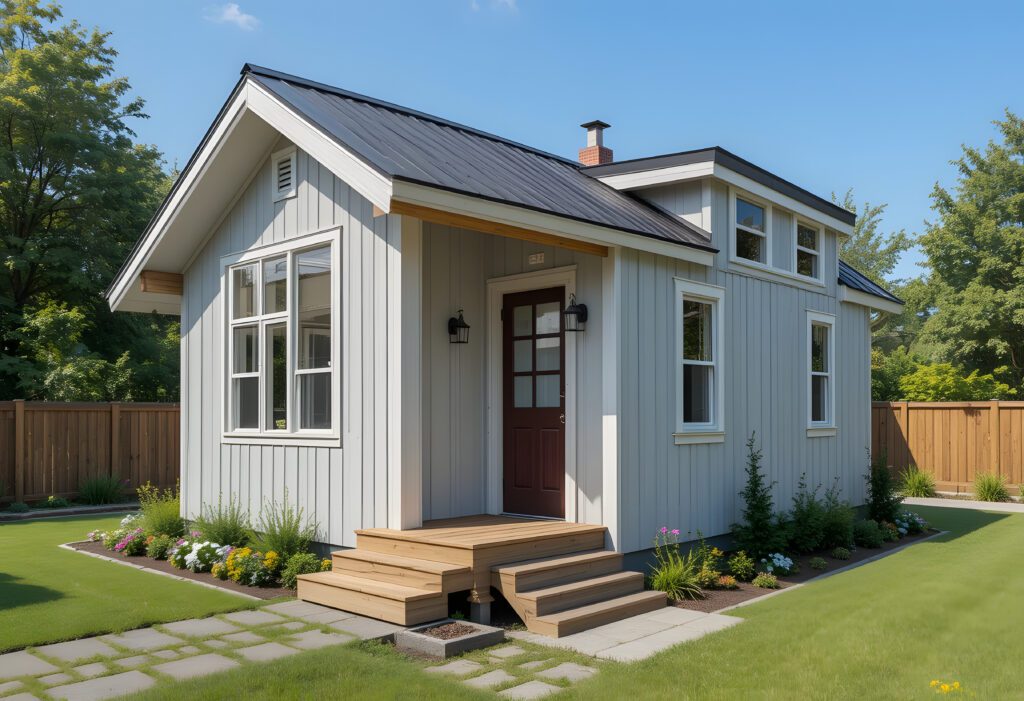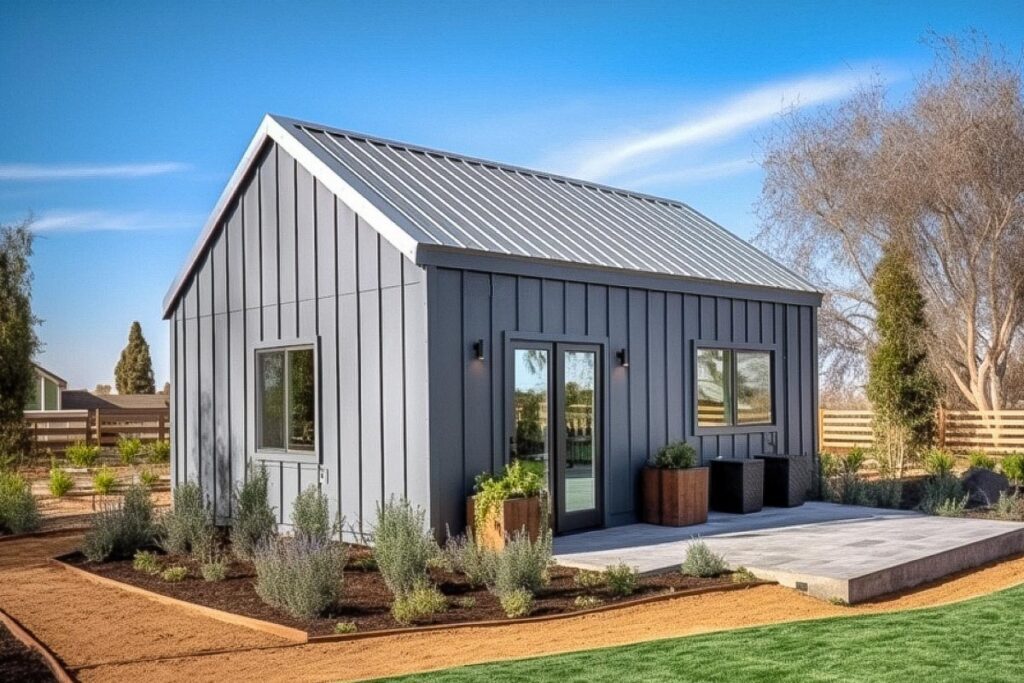Look… the tiny-home world has changed. Fast.
A few years ago, you could build a cute little cabin on wheels, snap some pictures, and boom, everyone clapped. But the industry’s grown up. People want real homes now. Real structural strength. Real longevity. Real engineering.
And that’s exactly why more Tiny House Builders, especially the ones building code approved tiny homes, are ditching those flimsy, generic foundations and moving toward heavy-duty engineered trailer bases.
Not “good enough.”
Not “steel-ish.”
I’m talking real, engineered foundations built for the weight, movement, and lifespan of an actual home.
And yeah… Trailer Made Custom Trailers is right at the heart of that shift.
Let’s get into it.
The Short Answer: A Home Is Only As Strong As Its Base
People love to talk about roofing, siding, windows, and fancy cedar touches.
But let’s be real, none of that matters if the thing you’re building on can’t actually carry the load.
A tiny house isn’t light.
A code approved tiny home isn’t even close to light.
You’ve got heavy framing, insulation, appliances, water tanks… and then you tow the whole thing down a mountain highway at 65 mph. The wrong trailer will twist. Bow. Crack. Fail.
Heavy-duty, engineered bases?
They don’t flinch.
That’s the difference.
Why “Any Trailer Will Do” Is the Biggest Lie in the Tiny Home Industry
There’s this myth floating around that new builders hear from some YouTube guy who built his house in two weekends that says:
“You can build a tiny house on any flatbed trailer.”
No.
Absolutely not.
Unless you like sagging floors, broken welds, and being told your build isn’t code compliant.
Here’s what actually happens when builders use non-engineered foundation trailers:
- The frame flexes under load.
- Doors stop closing right.
- Windows crack from stress.
- Plumbing joints loosen.
- The whole home develops this slow, ugly lean.
And once that starts? You can’t fix it.
This is why seasoned Tiny House Builders don’t mess around anymore. They want heavy-duty engineered bases, designed from the ground up for tiny-home structures, weight distribution, and code requirements.
Engineered Trailers = Code Approved Tiny Homes
If you want a home that can pass an inspection, meet residential standards, or qualify as a legitimate ADU… you can’t build on guesswork.
You need:
- Engineered load paths
- Certified steel
- Proper axle ratings
- Weight-distribution planning
- Actual documentation for your inspector
Trailer Made Custom Trailers provides engineered drawings, real engineering, not a PDF someone “made look official,” and that’s what gets tiny homes approved as legal dwellings.
Truth is, most of the new ADU builder companies entering the market are going straight to engineered trailers because they know inspectors aren’t playing around anymore.
Why Tiny House Builders Are Finally Choosing Heavy-Duty Trailer Frames
Builders didn’t switch because it sounded cool.
They switched because the old way stopped working.
Here’s the real list, the human version, not the brochure version.
1. Homes Got Bigger and Heavier
People want:
- full-size kitchens
- tile showers
- lofts that can actually hold adults
- bigger water systems
That means more weight. A lot more weight.
Generic trailers just can’t carry it.
2. More Customers Want ADU for Sale Units
The ADU market exploded.
Cities want safe, code-approved units on engineered foundations.
If you want to sell ADUs legally, you need a base that checks every box.
3. Builders Got Burned
They tried the DIY approach.
They tried repurposing old utility trailers.
They saw what happened.
Once you’ve watched a house crack down the middle literally, you don’t roll that dice again.
4. Lifespan Matters Now
This is the big one.
We’re past the fad stage. People aren’t building weekend cabins. They want homes that last 20–30 years.
A heavy-duty engineered trailer is the only foundation that actually supports that lifespan.
What Makes Trailer Made the Industry Leader (Builders Know This)
I’ll keep this straightforward. Trailer Made didn’t become the go-to foundation by accident.
Built Specifically for Tiny Homes
Most trailers are designed for cargo.
Trailer Made designs for dwellings, which are completely different.
Everything is engineered for:
- floor loads
- framing attachment
- moisture control
- stability
- long-term flex resistance
True Engineering, Not “Internet Engineering”
Real engineers.
Real certifications.
Real plans you can hand to an inspector without sweating.
Massive Strength, Zero Guessing
The frames don’t twist.
They don’t sink unevenly.
They don’t sag over time.
Builders like that because it saves them money, time, and… headaches.
Optimized for DIYers Too
You don’t have to be an ADU builder with a big shop.
Even DIY folks benefit because the foundation comes ready to build on, no modifications needed.
The Mistake New Builders Keep Making (and Keep Regretting)
Here’s the part everyone tries to skip:
Cutting corners on the trailer always seems like a good idea… until it isn’t.
People spend $30,000–$120,000 on a tiny home.
But then try to save $2,000 by choosing a cheap trailer.
That’s like buying a nice car and putting cracked, used tires on it because they “look fine.”
The foundation isn’t where you save money.
It’s where you protect everything else you’re investing in.
Heavy-Duty Trailer Frames Make Building Faster (Nobody Talks About This)
Everyone talks about strength.
Nobody talks speed.
But builders who switch to engineered tiny home trailers suddenly shave off weeks of build time.
Why?
- No floor leveling fixes
- No welding modifications
- No guessing where to attach framing
- No axle replacements mid-build
- No twisted frames during sheathing
Everything is ready.
Everything is square.
Everything is engineered.
You start building the home on day one, not repairing the foundation.
The Future of Tiny Homes Is Engineered Foundations
We’ve entered the era of:
- higher standards
- more city regulations
- More buyers are demanding quality,
- more financing options (which require engineering)
And that means the only real option for modern builders is a heavy-duty foundation built for long-term use.
Trailer Made didn’t just adapt to that future; they’re shaping it.
So… Why the Big Shift?
Because word spreads.
Builder to builder.
Shop to shop.
Project to project.
Someone uses an engineered base once…
And they never go back.
The industry figured out the truth:
“A tiny home is only as good as the trailer it sits on.”
That’s it.
That’s the real reason so many tiny house builders are switching.
You want:
- strength
- code approval
- stability
- long-term value
Then you choose an engineered heavy-duty trailer base.
And if you want the best version of that?
You go to Trailer Made.
FAQs
1. Do I really need a heavy-duty engineered trailer for a tiny home?
Short answer, yeah, you do. If you want a code approved tiny home, a safe home, or one that won’t twist over time, an engineered trailer is the only real option.
2. Can I build any style tiny house on a Trailer Made base?
Pretty much. Builders use them for everything from modern tiny homes and rustic cabins, ADUs for sale, off-grid units, and big lofted designs. The foundation is designed to work with all tiny-home layouts.
3. Is a heavy-duty trailer worth the extra cost?
Absolutely. Cutting corners on the foundation is the single biggest regret tiny-home builders report. A quality trailer protects your entire investment.
4. What makes Trailer Made better than regular flatbed trailers?
They’re engineered specifically for home loads, not cargo loads. Different game. Different stress. Different design. Trailer Made builds for long-term residential use.
5. Can an engineered trailer help with passing inspection?
Yes. Inspectors want documentation and engineered load paths. Trailer Made provides real engineering, exactly what you need for code approval and permitting.
Ready to Build Something That Lasts?
If you’re serious about building a tiny home or becoming a serious ADU builder, start with the foundation that actually supports a real home.
Visit Trailer Made Trailers to start your build.
You’ll thank yourself later.










